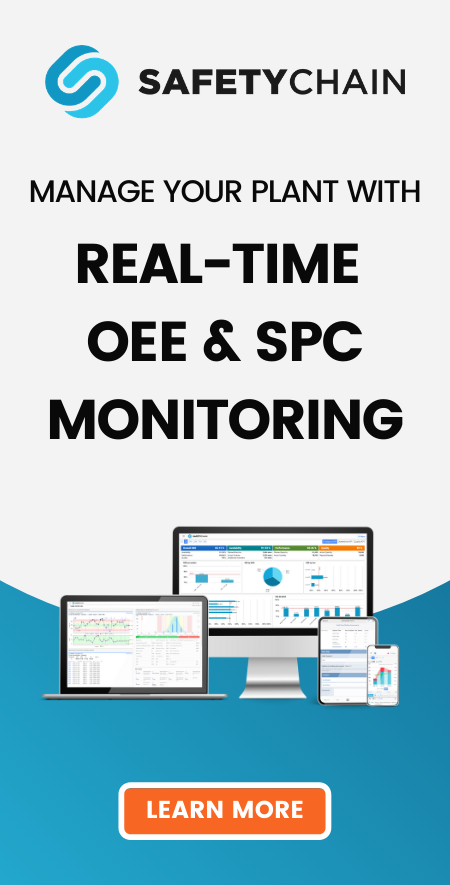Editor’s note: This is part two of a four-part series on understanding and implementing overall equipment effectiveness strategy. This series is sponsored by SafetyChain Software.
When it comes to food manufacturers improving plant efficiency using overall equipment effectiveness (OEE), simply looking at output figures is not enough, says Clara Gavriliuc, Vice President of Data Analytics for SafetyChain Software.
“Without analyzing the data of each of the three OEE components during the production day, it is hard to address the root cause of inefficiencies that will contribute to significant long-term costs,” explains Gavriliuc.
 For optimum data collection and analysis, the opportunity lies with real-time plant performance software that is capable of tracking anything from downtime to how long it takes ovens to get to the right temperatures, to packaging.
For optimum data collection and analysis, the opportunity lies with real-time plant performance software that is capable of tracking anything from downtime to how long it takes ovens to get to the right temperatures, to packaging.
“There are certain time inefficiencies that are easy to see and easy to calculate what impact they’ve caused,” says Gavriliuc. “However, there are many inefficiencies that may be hidden and only revealed when looking at data that isn’t typically captured by paper-based documentation.”
Identifying the biggest pain points
Often, these hidden data can be used to avoid or minimize production loss from the easier to see inefficiencies. Hands down, one of the biggest and easiest to see pain points for reduced output in food plants is unplanned downtime from breakdowns.
“From an availability standpoint, breakdowns are simple: The inefficiency cost is calculated by the amount of time you’re down and what that would have been worth if product was produced. However, what often happens is that food companies will look at this figure at the end of the day and not progress it further to identify the true root cause,” explains Gavriliuc.
When analyzing real-time data, employees can monitor different components of the production line that may signal a potential breakdown risk. For example, if the data is showing time per unit is slowing down in one specific area of the line, that area can be assessed immediately for what is causing the performance issues.
“What they may find is that a product isn’t feeding well into a machine and is at risk for jamming or a piece of equipment needs to be recalibrated,” says Gavriliuc. “So, what may seem like a small pain point that is slowing down production may actually be the culprit of something much larger. We don’t want to wait until something breaks – we want to be proactive. Addressing the root of the issue immediately can have huge savings in downtime production loss later.”
While real-time data can be used to help head off any major downtime issues, they can also be used to justify upgrades into equipment or signal the need for investments into personnel training. For example, say there are two lines that are producing the same exact product. Line one is keeping up with throughput targets and moving along seamlessly. Line two is starting to bottleneck.
Having real-time data will help to operators and supervisors to quickly identify which area of the line is slowing things down.
“Perhaps a machine just needs to be calibrated and it is back to operating. Or, if the machine just isn’t capable of operating at the capacity required, OEE can help determine if it is cost justifiable to make an upgrade,” says Gavriliuc. “If the cause of slow throughput happens to be a personnel issue, then new training can be put in place to help get workers operating at the level they need to be. Whatever the root cause is, real-time data gives managers actionable data that will allow them to make immediate decisions to help improve overall efficiency of a food processing facility.”
Analyzing the data
When it comes to analyzing data to determine what actions can be taken to mitigate the biggest pain points, they must maintain a balance of the three areas of OEE: Availability, Performance and Quality.
“You can focus on increasing availability and performance, but if it jeopardizes quality and you’re wasting product, then you’re not efficient. Or you can focus on quality, but if your machine availability and performance isn’t keeping up with demand, then you’re not efficient,” concludes Gavriliuc.
“Remember, OEE is a good indicator of how you are performing in all areas of production.”

